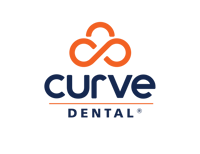Top 5 Dental Practice Management Software Solutions

What is a dental practice management software?
Dental practice management software (DPMS) is a comprehensive solution designed to streamline various operations within a dental practice to enhance patient care. This type of software integrates various functionalities to handle the administrative, clinical, and financial aspects of dental office management. From appointment scheduling to billing, patient records management, revenue cycle management, and treatment planning, DPMS enables dental professionals to optimize their workflows and improve overall efficiency. So, if you’re looking for dental practice management platforms to increase practice and clinical efficiencies, you are in the right place.
5 Key Features of Dental Practice Management Software
- Appointment Scheduling: One of the core functionalities of dental practice management software is the ability to manage patient appointments effortlessly. Some software offers online scheduling for patients to self-schedule. This feature allows practitioners to view open slots and appointment requests, reduce no-shows with automated appointment reminders, and accommodate emergency patient scheduling.
- Patient Records Management: DPMS provides a secure platform to store and manage patient records, including medical histories, dental records, online patient forms, treatment plans, and X-ray images, ensuring all necessary information is readily accessible and current.
- Billing and Insurance Claims: Billing can be daunting for dental practices. If your billing team could benefit from simplicity in their day-to-day operations, DPMS simplifies billing by automating invoicing, tracking payments, and integrating insurance claim submissions. Some DPMS offers patient payment solutions, including text-to-pay for easy patient payments, reducing human error, and streamlining revenue management cycles.
- Treatment Planning, Charting, and Imaging: Many software solutions offer tools for creating and managing treatment plans and paperless charting, but fewer offer native imaging to work directly with a particular hardware device, such as a camera or scanner, without the need for additional drivers or intermediary software. This direct integration allows for optimized performance, faster processing, and better compatibility. These tools enhance patient case acceptance rates and optimize overall dental care.
- Reporting and Analytics: A robust DPMS provides valuable insights through detailed reporting and analytics functionalities. Dentists can monitor key performance indicators like patient retention rates, new patient caseloads, and case acceptance rates.
Top 5 Cloud-Based Dental Practice Software Options
Many dental practices have transitioned or are transitioning to cloud-based DPMS because cloud-based platforms reduce downtime, simplify workflows, and support seamless growth. With many options on the market in North America, choosing the right cloud-based dental software can be overwhelming.
Here, we present some of the top-rated solutions that modern dentists are turning to for efficient practice management and enhanced patient care, according to dental professionals on G2:
- Curve Dental
Overview: Curve Dental is an all-in-one practice management software specifically designed for dental practices of all sizes. Known for being an industry leader in innovation, Curve provides dental professionals with the flexibility and functionality needed to efficiently manage their operations, improve patient care, and enhance overall practice productivity.
Features:
- Comprehensive patient management tools, including electronic health records (EHR), online appointment scheduling, patient reminders, and recall notifications, which help improve patient engagement and retention.
- An intuitive interface that minimizes the learning curve for dental staff helps ensure that everyone can perform their tasks effectively without extensive training.
- Streamlined billing and insurance processes: providing advanced features for submitting claims electronically, text-to-pay online payments, tracking payments, and managing patient balances. This enhances the financial efficiency of the practice, its Revenue Cycle Management (RCM), and overall business performance.
- Robust reporting tools that allow dental practices to analyze key performance indicators, monitor practice metrics, and make informed decisions based on data-driven insights.
- Practice marketing tools to help engage new and existing patients through email campaigns, 2-way text messages, and automated appointment reminders.
- Securely stored patient data complies with industry regulations like HIPAA, providing dental professionals with peace of mind regarding patient confidentiality.
Why Choose Curve Dental?
Curve Dental suits practices of all sizes, from small clinics to larger dental service organizations (DSOs), enabling smooth transitions as the practice grows. It offers dedicated customer support and training resources, ensuring practices can maximize their software investment and promptly address any challenges. Dentists trust Curve for reliability and consistency, as it boasts an excellent up-time performance of 99.99%. With its subscription-based model, Curve Dental can be a cost-effective choice for practices looking to reduce overhead costs associated with traditional desktop software.
- Open Dental
Rated 4.3 out of 5 stars on G2
Overview: Open Dental is an open-source practice management software that offers high flexibility and customization options. Its design caters to the unique needs of various dental practices, making it a popular choice for those who prefer tailored solutions.
Features:
- Patient management and scheduling.
- Customizable treatment planning templates.
- Integration capabilities with other software and tools.
Why Choose Open Dental?
Its scalability makes it a favorable option for practices of varying sizes. Moreover, being open-source means users can modify the software, allowing for enhancements that address practice needs. This level of customization fosters a more personalized and efficient patient care experience.
- Dentrix Ascend by Henry Schein
Overview: Dentrix Ascend is a cloud-based platform for practices of all sizes. Known for its flexibility, it offers intuitive features that enhance clinical and administrative workflows.
Features:
- Comprehensive scheduling tools.
- Advanced patient communication options.
- Integrated reporting and analytics for business insights.
Why Choose Dentrix Ascend?
Its user-friendly interface and robust functionality allow dental teams to optimize operations and focus more on patient care.
- Eaglesoft by Patterson Dental
Overview: Eaglesoft is another powerful practice management solution that seamlessly integrates clinical and financial management. Its cloud capabilities allow for easy access to patient data from anywhere.
Features:
- Customizable dashboards.
- Automated billing and insurance tracking.
- Advanced imaging integration and management.
Why Choose Eaglesoft?
This software provides comprehensive tools that streamline clinical and office management, ensuring that practices maintain efficiency and productivity. Additionally, Eaglesoft offers robust training and customer support, essential for practices looking to maximize their capabilities. With user-friendly navigation and customized features, staff can quickly adapt to the system, minimizing downtime and enhancing overall workflow.
- SoftDent by Carestream Dental
Overview: Carestream Dental offers a cloud-based solution that combines radiography and practice management, providing a comprehensive approach to patient care. This integration helps streamline various processes, such as imaging, treatment planning, and payment collection.
Features:
- Digital imaging solutions are integrated with management tools.
- Comprehensive patient records management.
- User-friendly interface for quick access to vital information.
- Reporting and analytics tools for performance monitoring.
Why Choose Carestream Dental?
The system’s cloud-based structure ensures practitioners can access vital patient information anytime, anywhere, while maintaining data security and compliance. Integrating digital imaging with management tools enhances patient care and optimizes workflows, reducing the time spent on administrative tasks. Carestream Dental’s reporting and analytics features also help practices track key performance indicators, allowing for informed decision-making and continuous improvement.
Top 5 Server-Based Dental Practice Software Options
Choosing the right server-based software is essential for the smooth operation of a dental practice. Below are some popular server-based dental practice management software options that are effective for some dentists, according to dental professionals on G2:
- Open Dental
Rated 4.3 out of 5 stars on G2
Overview: Open Dental is an open-source software option with extensive flexibility and customization capabilities. Its server-based model allows practices to modify and scale the software according to their needs. Users appreciate the vast array of features that support various practice management tasks, including patient records management, treatment planning, billing, and appointment scheduling.
- PracticeWeb
Rated 4.2 out of 5 stars on G2
Overview: PracticeWeb stands out for its user-friendly interface and comprehensive features tailored to modern dental practices. Focusing on enhancing patient engagement, PracticeWeb offers tools for online appointment scheduling, treatment plan presentations, and patient education resources that facilitate better communication between dentists and patients. This software allows practices to provide a more interactive experience, helping patients feel more informed and empowered about their dental health.
- Eaglesoft by Patterson Dental
Overview: Eaglesoft combines practice management with clinical functionality, making it an ideal choice for integrated solutions. The software can be installed on local servers, allowing direct control over data management and backup protocols. Eaglesoft is particularly well-suited for practices looking for in-depth reporting and performance analysis, helping dentists understand financial health and operational efficiency.
- Dentrix by Henry Schein
Rated 4.0 out of 5 stars on G2
Overview: Dentrix is one of the most recognized names in dental practice management software. It offers robust features, including appointment scheduling, billing, and patient communication tools. Its server-based option provides practices complete control over their data and the flexibility to customize their backup processes. With Dentrix, dentists can maintain high levels of security and reliability while accommodating their unique workflows.
- EasyDental by Henry Schein
Rated 3.7 out of 5 stars on G2
Overview: EasyDental is a simplified, yet powerful practice management software designed for smaller dental practices looking for straightforward solutions. Rated highly for its user-friendly interface, EasyDental streamlines essential tasks such as appointment management, billing, and patient records handling without unnecessary complexity. For dental service organizations (DSOs) and large practices, Dentrix Enterprise by Henry Schein would be a better choice.
Choosing the Right Dental Practice Management Software
With many options on the market in North America, choosing the right dental software can be overwhelming. Product reviews are a place to start. According to G2 product reviews, the top cloud-based solution is Curve Dental, which focuses on an all-in-one architecture for seamless scalability and efficiency and offers native imaging. It ranks higher than on-premise, server-based software options.
G2 said, “Curve Dental is an all-in-one cloud-based practice management software designed for dental practices of all sizes. Renowned for innovation, Curve empowers practices with the flexibility and tools to optimize operations, elevate patient care, and enhance productivity…Curve Dental’s all-in-one architecture reduces the need for multiple logins and integrations, enhancing operational efficiency and cybersecurity. Its exceptional uptime performance (99.99%) ensures reliability. With dedicated customer support, ongoing advancements like Curve Mobile, and a cost-effective subscription model, Curve is a trusted choice for practices of all sizes.”
Always demo software and ask questions about it before making your decision.
*This content was partially generated by artificial intelligence. It may contain errors or inaccuracies, and should not be relied upon as a substitute for professional advice.

Curve Dental
Welcome to the official blog of Curve Dental. Serving up content about the team behind Curve Dental
